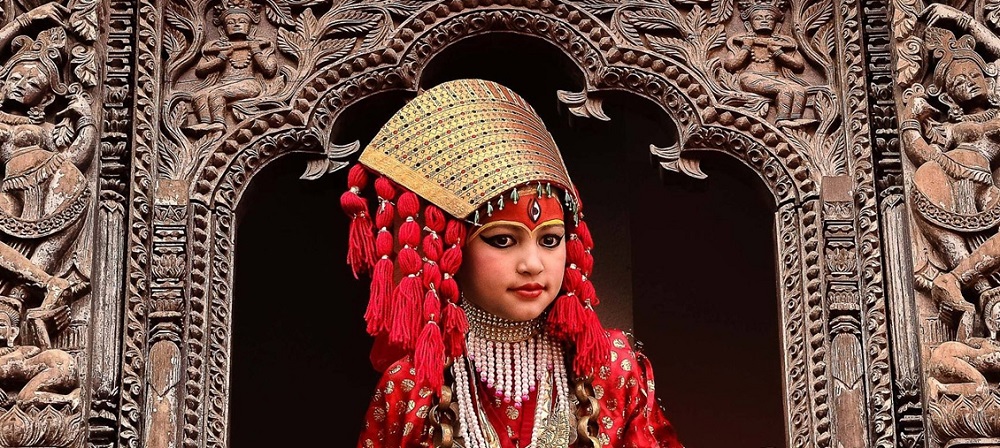Everything you need to know about “Kumari” or the Living Goddess in Nepal
In Nepal, the tradition of the living goddess, known as Kumari, has been a significant part of the culture for centuries. The Kumari is a young girl who is believed to be the earthly manifestation of the Hindu goddess Taleju. She is revered as a divine figure and is considered to possess spiritual and healing powers.
The selection process for the Kumari is rigorous and follows strict criteria. Girls from the Newar community of Nepal, primarily belonging to the Shakya caste, are eligible to be considered for the role. They must meet specific physical, astrological, and familial requirements.
The search for a new Kumari begins when the current Kumari reaches puberty or menstruates, as it is believed that the goddess Taleju leaves her body at this stage. A team of priests conducts a series of rituals and tests to identify potential candidates. The girls undergo a screening process, which includes physical examinations and tests to determine their fearlessness and ability to remain calm in various situations.
One of the key criteria for becoming a Kumari is the possession of certain physical attributes, such as unblemished skin, a set of specific auspicious signs on the body, and a particular shape of eyes. The chosen girl must also have a compatible horoscope and come from a family with no history of major illnesses or deaths.
Once selected, the Kumari resides in the Kumari Ghar, a special palace in Kathmandu, the capital city of Nepal. Her family takes up residence in a nearby house and is responsible for her care. The Kumari follows a strict lifestyle and is not allowed to leave the palace except for certain religious ceremonies and festivals.
During public appearances, the Kumari is dressed in elaborate traditional attire, characterized by red garments, rich jewelry, and a crown. Devotees from Nepal and around the world visit the Kumari seeking her blessings and guidance. It is believed that her mere glimpse can bring good fortune.
The role of the Kumari is considered temporary, and she typically serves until she reaches puberty or menstruates. Once she retires, she resumes a normal life, and the search for a new Kumari begins. It is worth noting that the transition from being a living goddess to an ordinary person can be challenging for the girls, as they often face difficulties adjusting to regular life and education.
The tradition of the Kumari continues to be an integral part of Nepal's cultural and religious heritage, attracting both fascination and reverence. While it has drawn attention and some criticism due to concerns about the girls' well-being and rights, efforts have been made to ensure their welfare and provide support for their transition to a normal life after their tenure as Kumari.




.jpg)



